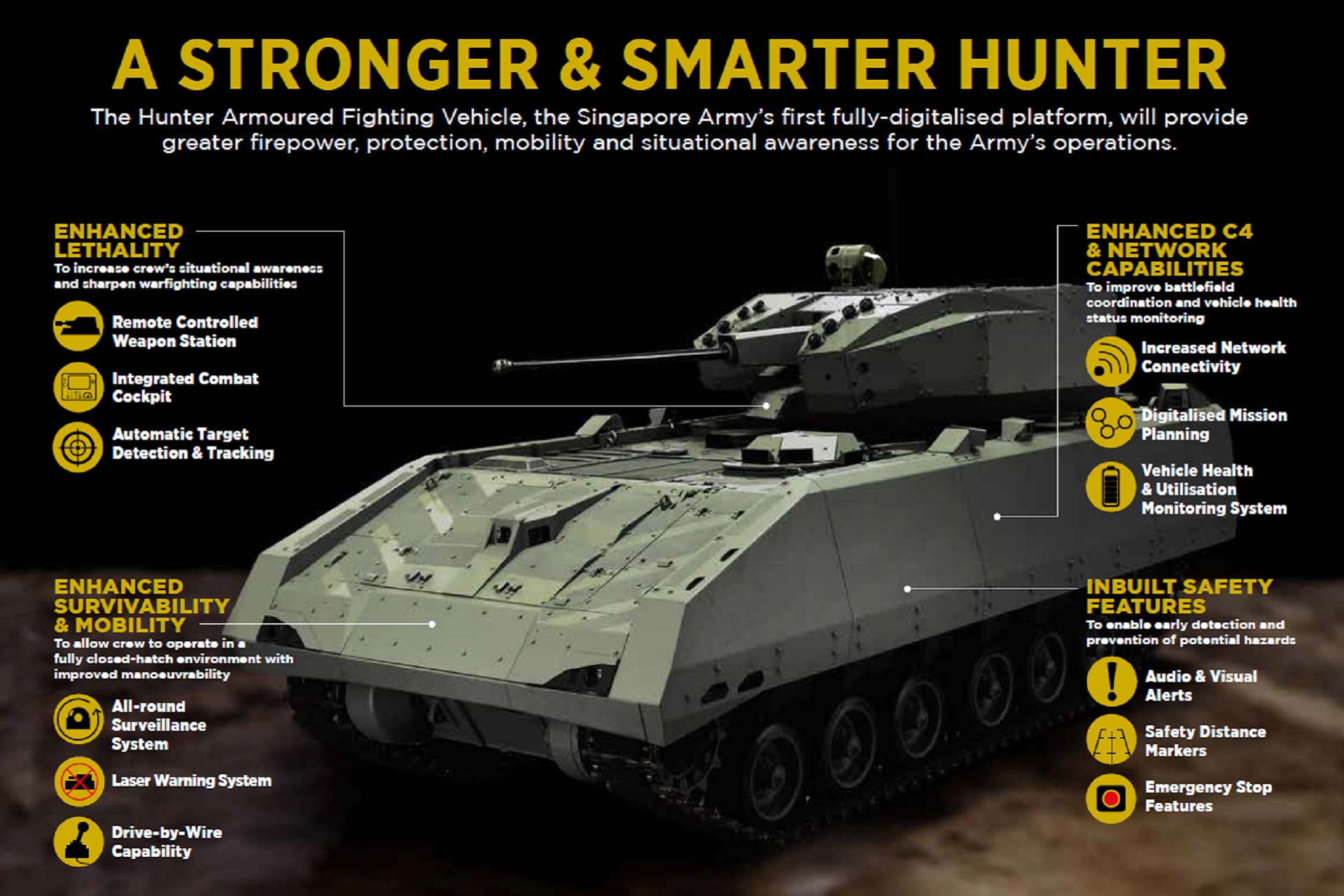Singapore Army commissioned it's newest armoured vehicle on 12 June 2019. The Hunter Armoured Fighting Vehicle (AFV) will replace the Ultra M113 AFVs. The Ultra is a locally upgraded version of the M113 first introduced in 1973.
The Hunter AFV was jointly developed by the Defence Science and Technology Agency (DSTA) in collaboration with the Singapore Army and ST Engineering. It is armed with a 30mm Cannon in a with a 7.62mm Coaxial Machine Gun (CMG) in a Remote Controlled Weapon Station. Some variant of the Hunter will have a telescopic twin launcher for Anti-Tank Guided Missile (ATGM). The defensive system includes a Warning System (LWS) and 8 x 76mm Smoke Grenade Launchers.
The crew of three sit in the hull in an Integrated Combat Cockpit. The vehicle commander and gunner to operate the vehicle and weapons using a common set of controls. The Hunter is equipped with an automatic target detection and tracking system, easing the workload of the gunner. The vehicle commander has an independent commander's sight, which allows him to concurrently scan for other targets whilst the gunner is engaging a target. The vehicle is equipped with a drive-by-wire system, which allows the vehicle commander to take over the driving functions from the driver if necessary.

Technical Specifications
Dismounted Troops : Up to 8
Dimension: Length 6.9m, Width 3.4m, Height 3.4m, Weight 29.5 Tonnes
Power to Weight Ratio: 24 hp/ton
Maximum Speed: 70km/h
Range : 500km
CyberPioneer
MINDEF

